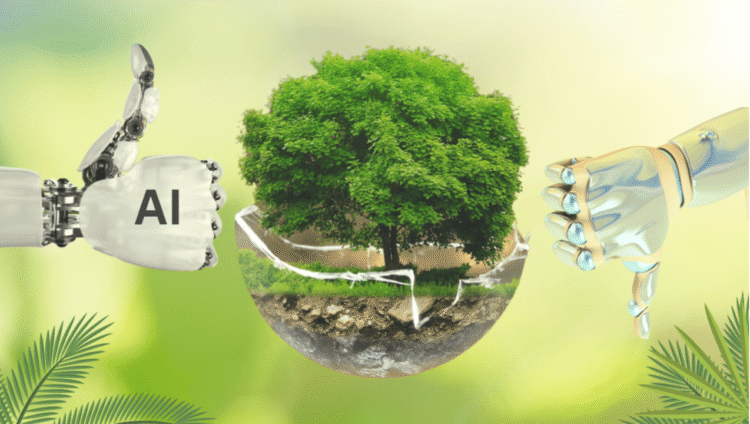Embracing sustainable software testing is environmentally responsible, enhances operational efficiency, and creates lasting business value.
AI Testing Cuts IT Carbon Footprint: Sustainable Software
The information technology sector accounts for approximately 2-3% of global carbon emissions, a figure that continues to rise as digital transformation accelerates across industries. While much attention focuses on data centers and cloud infrastructure, software development practices themselves contribute significantly to this environmental footprint. Among these practices, software testing stands out as a resource-intensive process that often goes unexamined in corporate sustainability strategies.
Traditional software testing consumes substantial computing power through repeated test executions, maintenance of multiple testing environments, and lengthy quality assurance cycles. As organizations commit to Environmental, Social, and Governance (ESG) goals, the need for sustainable software development practices has become critical. AI-powered testing automation offers a promising solution, dramatically reducing energy consumption while improving software quality.
***
The Hidden Environmental Cost of Traditional Software Testing
Energy-Intensive Testing Environments
Software testing traditionally relies on extensive computational resources that operate continuously throughout the development lifecycle. Manual testing requires testers to maintain multiple devices, browsers, and operating system configurations, each consuming electricity and generating heat that demands additional cooling infrastructure. A typical enterprise testing environment might run dozens of virtual machines simultaneously, with each instance drawing power comparable to running multiple high-performance computers.
The Cost of Test Maintenance
Legacy automated testing frameworks compound this problem through inefficient test execution. These systems often run entire test suites even when only minor code changes occur, wasting processing power on redundant validations. Test script maintenance presents another hidden cost. When applications change, brittle automation scripts break frequently, requiring developers to spend hours debugging and rewriting tests. This maintenance cycle translates into extended machine runtime and increased energy consumption across the software development lifecycle.
The problem intensifies with continuous integration and continuous deployment pipelines. A single code commit might trigger hundreds of test runs across different environments, with each execution consuming cloud computing resources and electricity. Organizations running 24/7 testing operations face particularly significant environmental impacts. Nightly regression test suites that take 8-10 hours to complete consume enormous amounts of electricity, contributing substantially to the IT sector’s carbon footprint.
***
How AI-Powered Testing Reduces Energy Consumption
Intelligent Test Selection and Optimization
Artificial intelligence transforms software testing into a lean, efficient process that minimizes resource consumption at every stage. AI-powered platforms employ intelligent test selection algorithms that identify which tests actually need to run based on code changes. Instead of executing thousands of test cases indiscriminately, these systems analyze the impact of modifications and run only relevant tests. This targeted approach can reduce test execution time by 60-70%, directly translating into lower energy consumption and improved DevOps efficiency.
Optimized Infrastructure and Resource Management
Machine learning algorithms optimize test execution sequences to maximize efficiency. By learning from historical test data, AI systems can predict which tests are most likely to fail and prioritize them accordingly. When tests are completed in minutes rather than hours, the energy savings multiply across every development cycle throughout the year.
Modern AI testing platforms also dramatically reduce infrastructure requirements. Traditional quality assurance often demands maintaining separate environments for different test scenarios, each requiring dedicated server resources. AI-powered solutions can simulate various conditions without spinning up multiple physical or virtual machines. Cloud-based AI testing platforms further optimize resource usage through dynamic scaling, allocating computing power only when needed.
***

Self-Healing Tests Eliminate Maintenance Waste
Perhaps most significantly, AI eliminates the environmental cost of test maintenance. Traditional automated tests break frequently when user interfaces change, requiring constant human intervention. AI-powered testing tools use advanced algorithms to adapt automatically to application changes, maintaining test stability without human intervention. This self-healing capability means tests continue running successfully without the energy waste associated with debugging broken automation scripts.
testRigor’s Approach to Sustainable Testing
testRigor exemplifies how next-generation software test automation tools contribute to sustainable software development and green IT practices. The platform’s plain English test creation approach eliminates the need for extensive coding, reducing the time developers spend writing and maintaining tests. This efficiency means less time with development environments running, directly reducing energy consumption.
The platform’s cloud-based architecture optimizes resource allocation intelligently. Unlike traditional testing frameworks that require organizations to maintain their own testing infrastructure, testRigor leverages shared cloud resources that scale dynamically based on demand. This approach ensures computing power is used efficiently, with resources released immediately when tests complete.
testRigor’s AI-driven stability features significantly reduce the environmental cost of test maintenance. The platform automatically adapts to changes in application interfaces without requiring script updates. Organizations report test maintenance time reductions of up to 95%, meaning fewer hours of computing resources dedicated to fixing broken automation. Faster test execution translates directly into reduced cloud computing costs and lower energy consumption, supporting corporate sustainability initiatives while improving software quality assurance.
***
Aligning Software Testing with ESG Goals
Environmental Impact and Reporting
Sustainable testing practices directly support the environmental pillar of ESG commitments. Companies can quantify and report the carbon footprint reduction achieved through optimized testing processes, demonstrating concrete progress toward climate goals. This measurable impact helps organizations meet increasingly stringent environmental reporting requirements and stakeholder expectations for green computing.
Governance and Social Responsibility
The governance aspect of ESG also benefits from AI-powered testing. Robust, efficient testing ensures software reliability and security, reducing the risk of breaches or failures that damage stakeholder trust. Automated quality assurance provides consistent, auditable results that support regulatory compliance and corporate accountability.
From a social perspective, efficient testing enables organizations to deliver better software products more quickly. Reliable applications serve users more effectively, supporting digital inclusion and accessibility. When testing processes consume fewer resources, companies can redirect savings toward innovation and social impact initiatives.
***
Final Note
As organizations worldwide intensify their commitment to environmental sustainability, every aspect of IT operations must be examined for efficiency improvements. AI-powered test automation offers a practical, immediately actionable approach to reducing the carbon footprint of software development. By optimizing test execution, minimizing infrastructure requirements, and eliminating maintenance waste, intelligent testing platforms help companies achieve their ESG goals while maintaining the software quality that modern businesses demand. Embracing sustainable software testing is not just environmentally responsible but also drives operational efficiency and long-term business value.
(India CSR)








